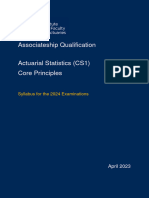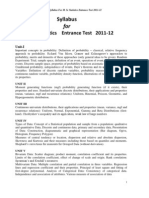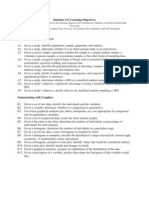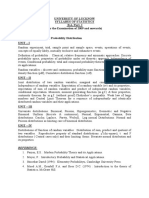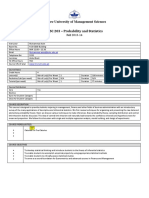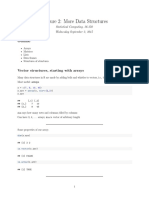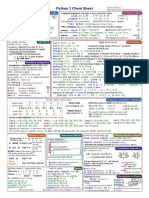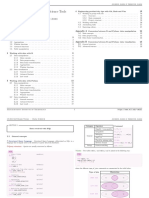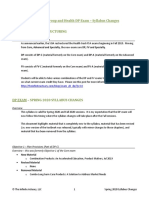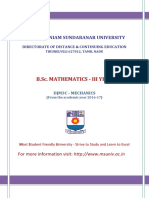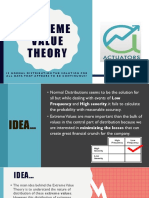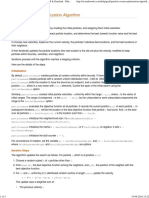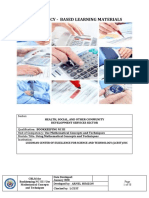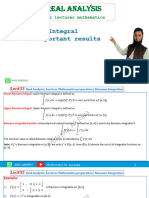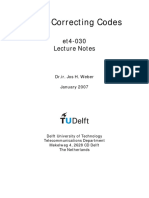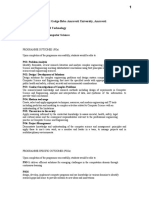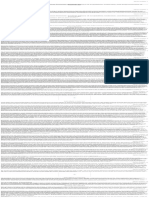0% found this document useful (0 votes)
420 views9 pagesCS1 Mapping Syllabus PDF
This document contains a syllabus for the CS1 Actuarial Statistics exam. It covers key topics in probability, statistics, and regression including random variables and distributions, data analysis, statistical inference, and linear regression. The syllabus is broken down into 4 main sections covering these topics and lists specific learning objectives within each section.
Uploaded by
Bakari HamisiCopyright
© © All Rights Reserved
We take content rights seriously. If you suspect this is your content, claim it here.
Available Formats
Download as PDF, TXT or read online on Scribd
0% found this document useful (0 votes)
420 views9 pagesCS1 Mapping Syllabus PDF
This document contains a syllabus for the CS1 Actuarial Statistics exam. It covers key topics in probability, statistics, and regression including random variables and distributions, data analysis, statistical inference, and linear regression. The syllabus is broken down into 4 main sections covering these topics and lists specific learning objectives within each section.
Uploaded by
Bakari HamisiCopyright
© © All Rights Reserved
We take content rights seriously. If you suspect this is your content, claim it here.
Available Formats
Download as PDF, TXT or read online on Scribd
/ 9







